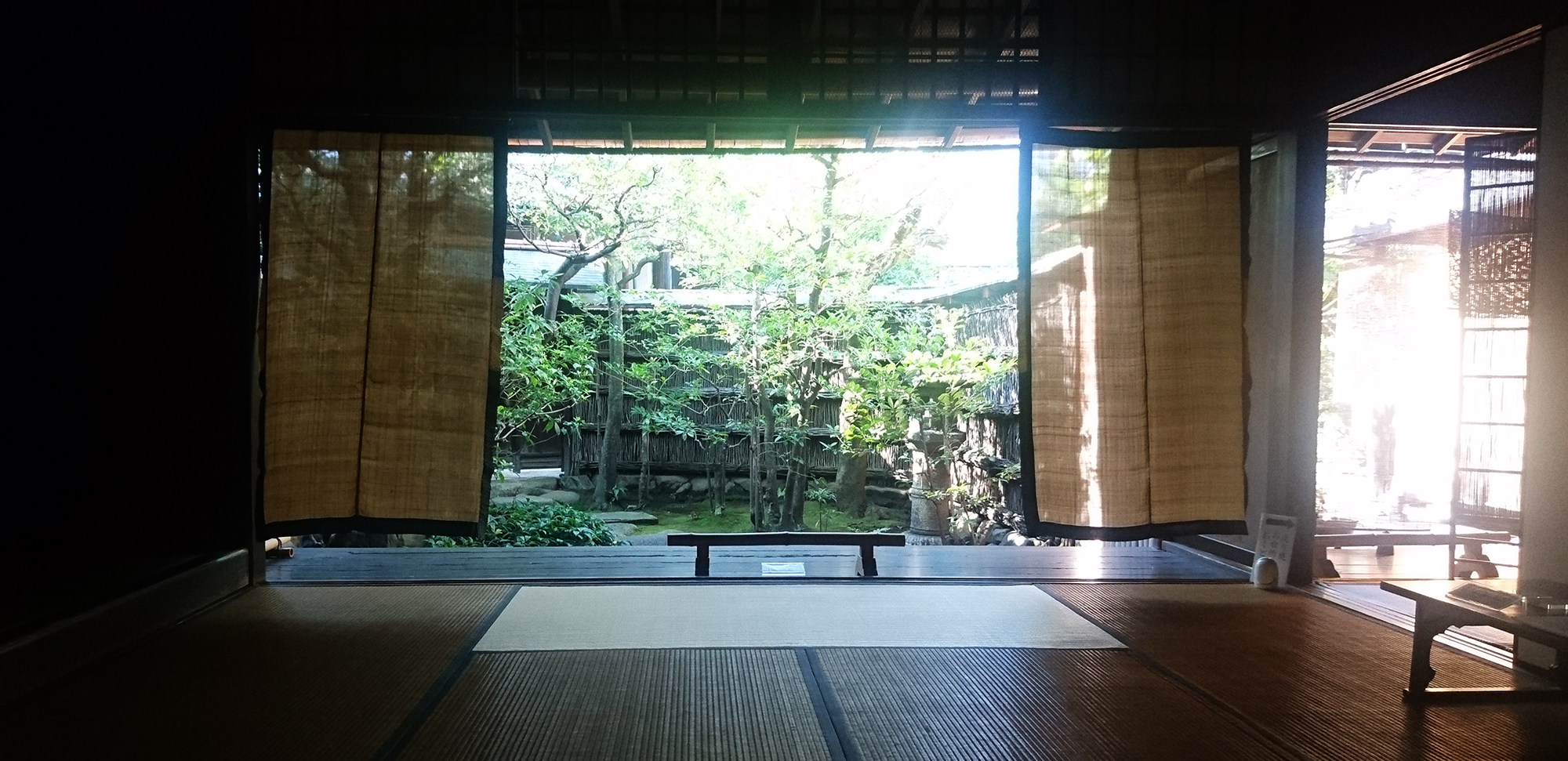INTRODUCTION
The Sugimoto family established an independent kimono fabric sales company at Karasuma Shijo sagaru, taking the name of “NARAYA” in 1743. Later, in 1764, they moved to the present location. They prospered in Kyoto and eventually opened branches in Kanto distributing Kyoto kimono fabrics.
The present main house is a rebuilding of one destroyed in a Ganji period (1864) conflagration. An inscription above the front door dates the raising of the timber framework to April 23, 1870. The owner at that time was the sixth generation merchant, Shinzaemon-Tamekata. The master carpenters were HISHIYA, Risaburou and OUMIYA, Gorouemon.
The main building is in the Omoteya-Zukuri style. Thus, the front store building, facing the main street, is connected to the rear living space by a secondary, interior, private entrance hall. The front exterior of the house has Kyoto-style lattice-work (Kyo-koushi), including a bay window shielded by wooden slats (Degoushi), large wooden door (Odo) and a Dog fence (Inuyarai). The fine plaster latticed townhouse window (Tsuchinuiri no Mushikomado) provides ventilation to a small floor sorehouses (Zushinikai). All of these features are typical of traditional Kyoto merchant houses (Kyo-machiya). The Sugimoto Residence is one of the largest remaining. The tatami-mat room has an alcove for decorative and ceremonial objects (Tokonoma), and beside the alcove a shelf (Tana). The family alter room housing the ancestral shrine (Butsuma) is a wing with its own district identity, within the house but projecting from it to the west. The traditional kitchen (in Kyoto dialect, calling a “Daidoko”) is large and open. All of these features are very distinctive. The house is well preserved and is the largest surviving merchant house in Shimogyo ward. It is three storehouses, main, center and corner storehouse (Oogura, Sumigura, Nakagura) respectively, looked at together, form an inverted L-shape ensemble. They are said to have remained standing, unburned, after the Ganji period conflagration, however, their foundation dates are unknown.
It is worth of that every year the ornamental trappings of the Hakuga Yama processional float are displayed in the house during the Gion festival season.
On February 20, 1990, the residence was designated as a Tangible Cultural Asset by Kyoto City, and on June 29, 2010, it was designated as a National Important Cultural Property. Additionally, on February 7, 2011, its garden was designated as a National Site of Scenic Beauty.

